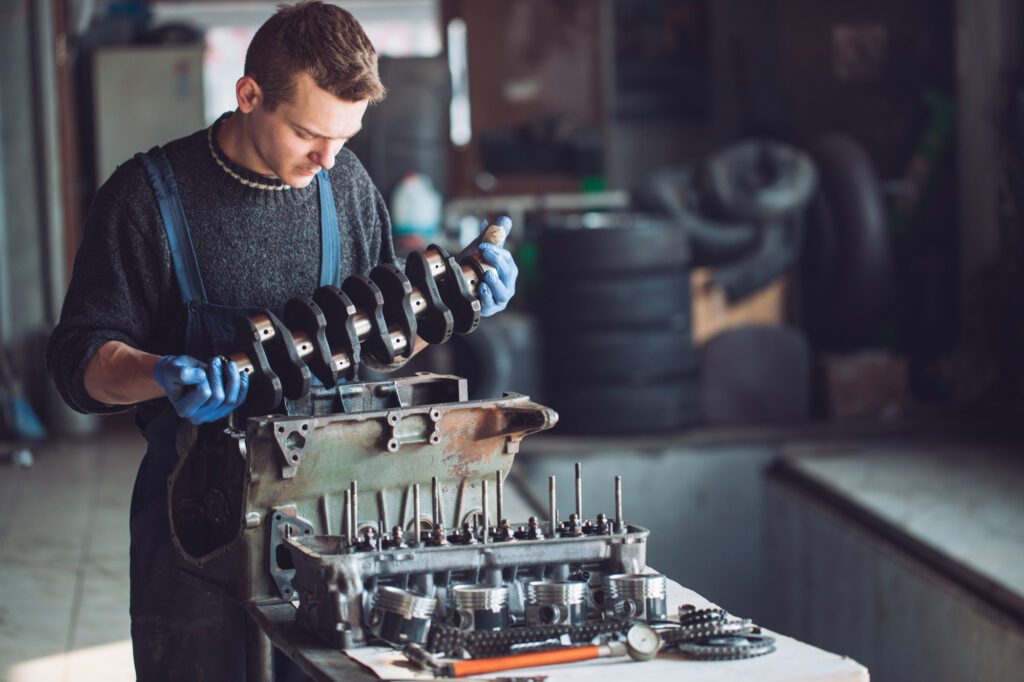There’s a lot of merit that comes with driving old cars, especially if it’s always been a childhood dream of yours to drive a vintage vehicle that’s no longer on the market. Unfortunately, this comes with complications. Many old cars don’t meet modern safety standards and lack the technology and features necessary for a smooth driving experience. This means they need to be rebuilt to keep up with modern cars.
So how exactly do mechanics go about rebuilding these vehicles, and more importantly, what steps can you take before having your car restored by a professional?
Before You Begin
Before you commit to having a vehicle rebuilt, take some time out of your day to sit down and think about what you’re about to do. Ask yourself if you’re better off rebuilding an old car as opposed to buying a new one. It’s not a simple task by any means, and your vehicle will be more of a passion project than anything else.
The more work you hire other people and shops to do, the more you’ll pay for the restoration. It’s very easy to sink more money into restoring a vehicle than you would pay for a new one if you hire other people to do the work. If you do the work yourself and take your time, you’ll spend a lot less on the vehicle.
Planning Your Project
If you’re still determined to drive a rebuilt vehicle, then it’s time to do some research. This means choosing a vehicle you want to restore and studying its make and model. Try and learn as much about its history as possible to help you get an idea of what parts you’ll need, how much you’ll spend, and other precautions you might need to take. Once you’ve got this all figured out, it’s time to start planning your project.
Bear in mind that it’s always best to leave restoration and rebuilding to professionals, but there’s also no harm in familiarizing yourself with what professionals do before they rebuild any vehicle.
Frame-off vs Frame-up Restoration
If you’re serious about rebuilding your car, you’ll need to decide if you want to get a frame-off or a frame-up restoration. Frame-off restorations, also known as rotisserie restorations, begin with disassembly.
Every component is removed and laid bare so that the mechanic can inspect every individual auto part. Paint, rust, and grime are removed via sandblasting before the frame is mounted on a rotisserie. This is done to allow more precise and complete restoration, though the process takes significantly longer and typically costs more.
Frame-up restorations, on the other hand, are much simpler and much more straightforward. These restorations are less expensive and take much less time, although this is largely because the process isn’t as extensive and precise.
Setting a Budget
If you’re trying to save time and money, you’re better off getting a frame-up restoration. If you want something more meticulous, frame-off restorations are your best bet. Once you’ve decided what type of restoration you want, you’ll have a much easier time estimating your budget.
When setting a budget, consider factors such as the vehicle’s initial cost, additional parts, labor costs, and other unexpected expenses. This way, you can manage your finances much more responsibly.
Assessment and Disassembly

Before you have a professional rebuild your vehicle, it’s important to inspect your vehicle carefully. To do this, you’ll need to have it disassembled.
But before you do that, you can start by performing basic visual inspections and checking all the different systems in the vehicle. This way, you can confirm if everything is working properly and single out components that need replacement.
Careful Inspection
Now that you’re done planning your project, you need to inspect your vehicle from top to bottom, inside and out. This means looking at the engine, transmission, suspension, and braking system and keeping a sharp eye out for signs of rust, corrosion, and other damage.
Mechanics are typically trained to do this and have all the equipment necessary. This is partially why it’s best to leave the process of rebuilding old cars to professionals who have the expertise necessary to get the job done.
Disassembly
Once all the parts have been inspected carefully, the mechanic will systematically disassemble the vehicle. More often than not, they will start by removing interior components before detaching other parts such as the panels, trim, and glass parts.
Documentation
As the mechanic disassembles your vehicle and removes all the different components, it’s a good idea to ask your mechanic to take photographs. This way, you can tell when parts have been damaged during the rebuild and pinpoint what needs to be replaced. Documentation can also help the mechanic reassemble the vehicle.
What Comes Next?
Once you’ve set your budget, inspected all your auto parts, and taken all the photos you need to help identify each component, it’s time to let your mechanic do their work. From here on out, it’s best to stay out of their way as they work on restoring the vehicle’s chassis and rebuild the engine and other vital components. All that’s left to do now is wait and watch as they restore your old car and apply the finishing touches.
Any information provided on this Website is for informational purposes only and is not intended to replace consultation with a professional mechanic. The accuracy and timeliness of the information may change from the time of publication.




















